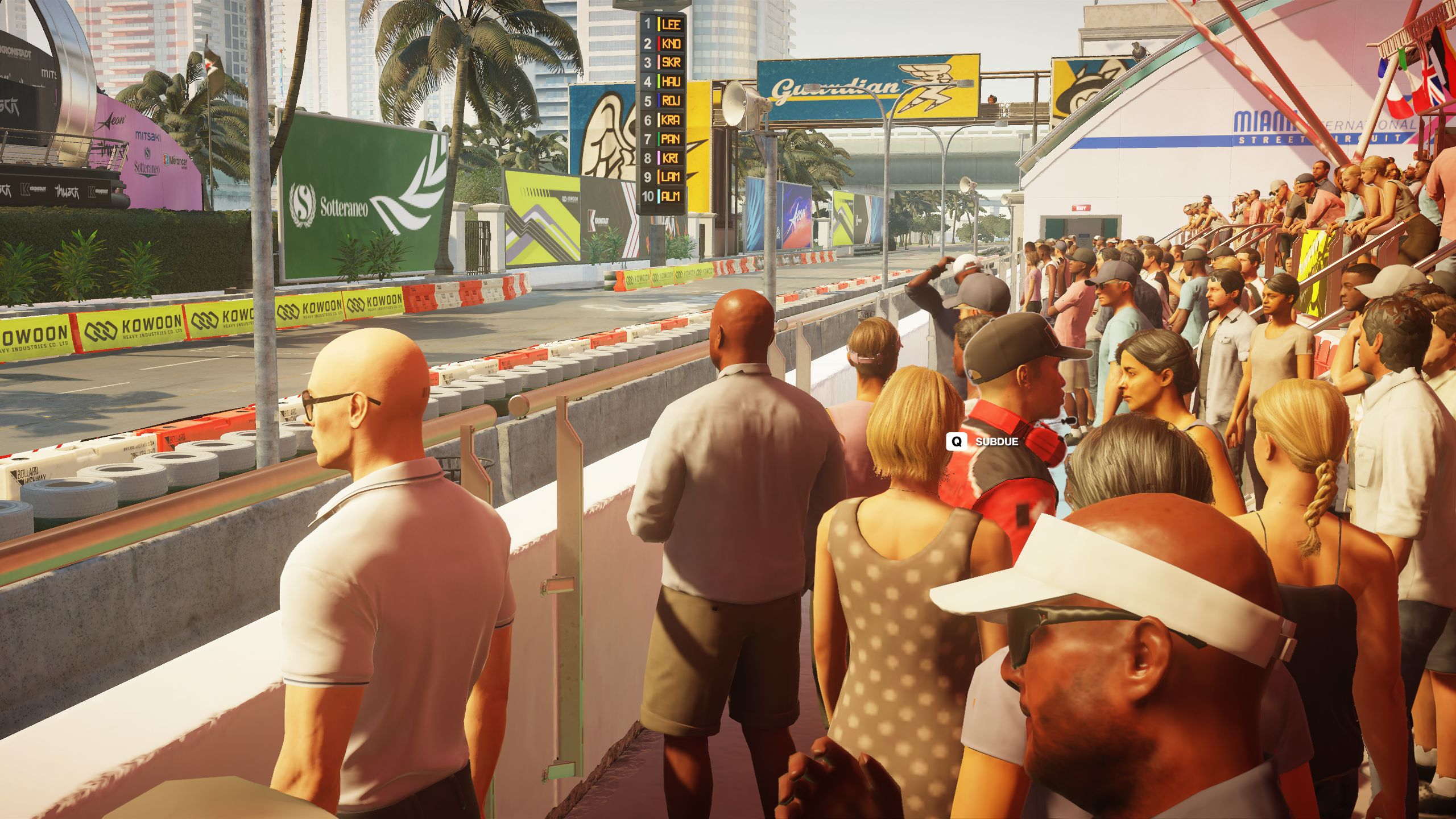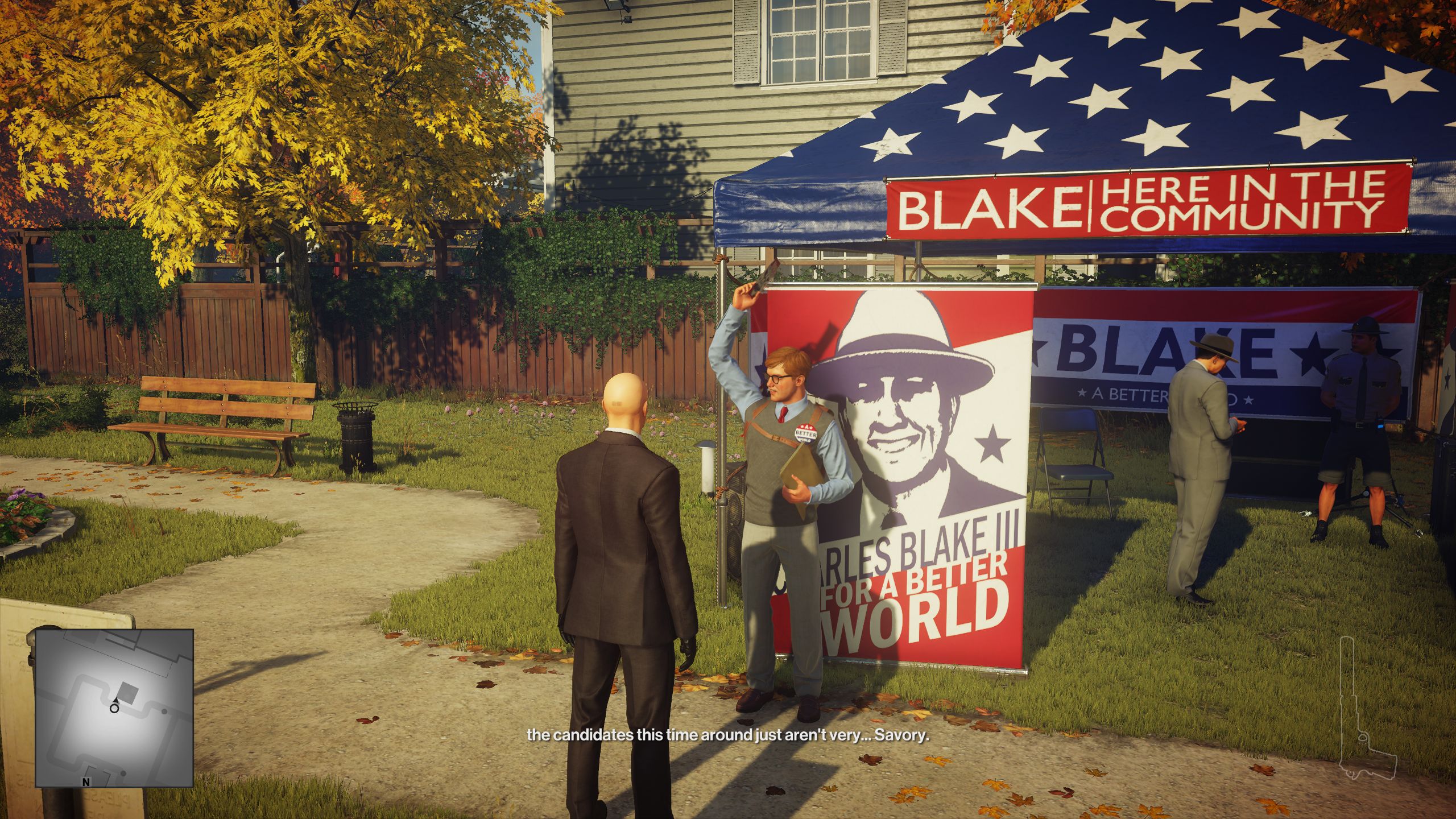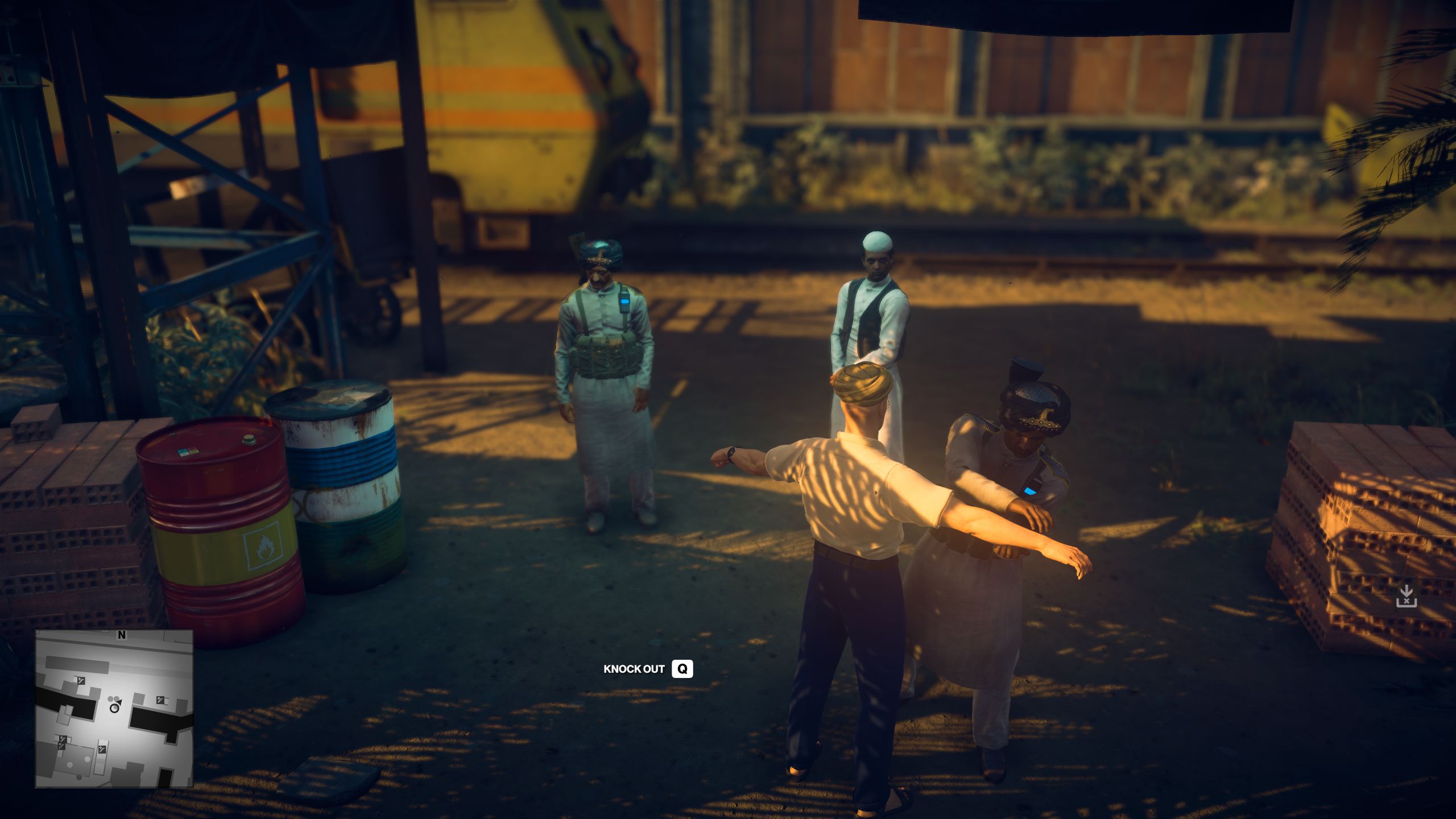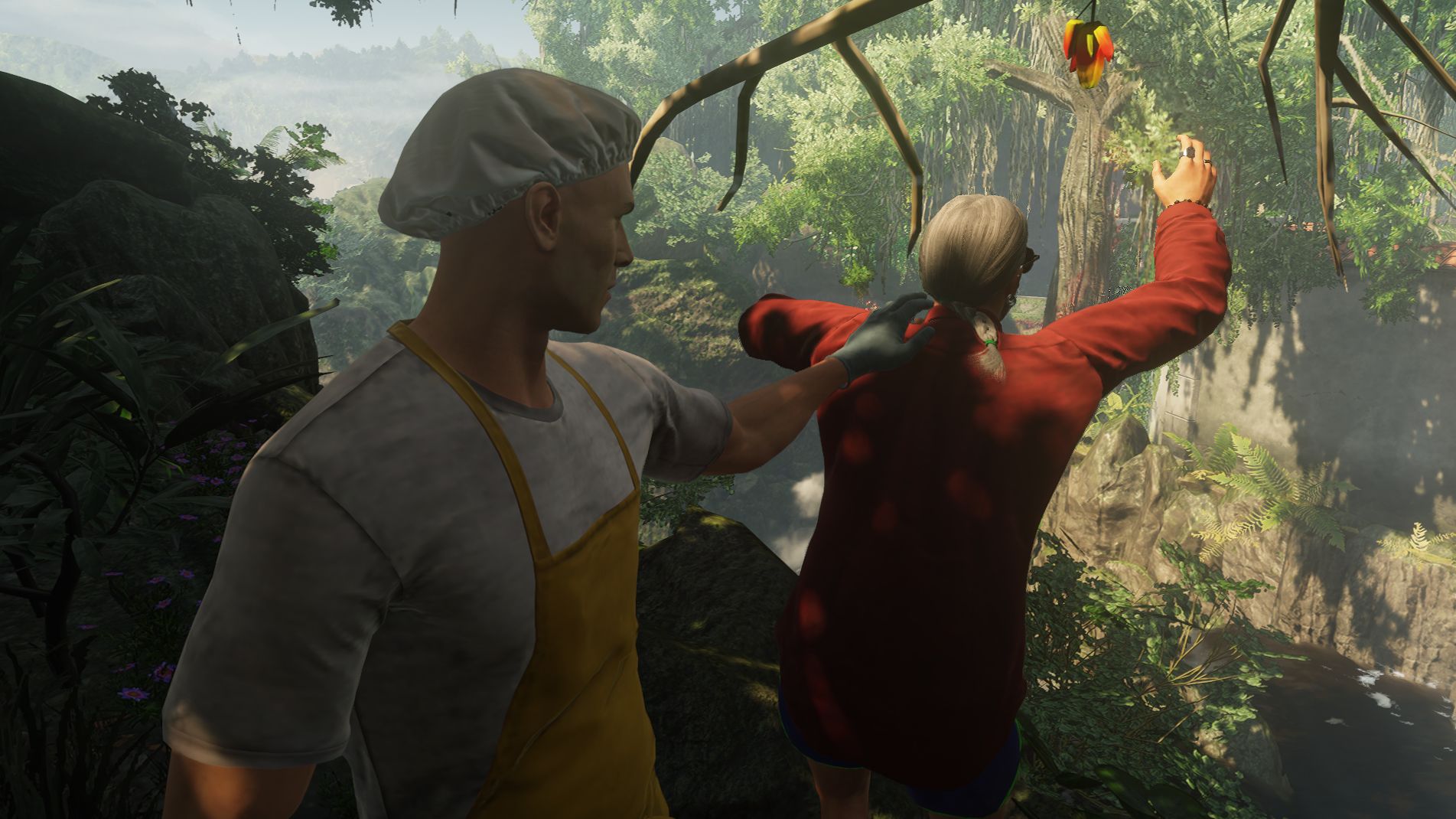Our Verdict
Essentially more of its predecessor but with a more consistent quality of levels. Which is fine: its predecessor was great.
PC Gamer's got your back
What is it? Sandbox stealth about a clone who is good at killing. Again.
Reviewed On: Windows 10, 16GB RAM, i5-6600k, GeForce GTX 1070
Price: $60/£45
Publisher: Warner Bros
Developer: IO Interactive
Multiplayer: None
Link: Official Website
Stabbed. Strangled. Electrocuted. Drowned. Technically, Hitman 2—like its predecessor—is an incredibly violent game. Your job as master assassin Agent 47 is to ensure a hit list of rich jerks meet a macabre end, preferably silently, with no witnesses or alarms. But—again, like its predecessor—Hitman 2 doesn't revel in its violence. It's not gruesome or gory. Your missions are more cerebral; a puzzle box where the win state is an arsehole being dead.
I could write "like its predecessor" a lot when describing Hitman 2. Perhaps more than any previous game in this 18-year-old series, Hitman 2 feels like a continuation of 2016's Hitman. Hitman 2: Silent Assassin was a major improvement upon Hitman: Codename 47. Hitman: Blood Money was a significant upgrade over Hitman: Contracts. Hitman: Absolution… actually, let's not talk about that one.
Hitman 2, though, is an iteration. It looks more impressive, but not by much. Its crowds are more dense, but not by much. The UI, menus and disguise system are all the same, and it shares the same crisp aesthetic style. Even the tutorial is a direct copy—the same two training missions set in a plywood simulation taking place in a massive underground silo. This is more Hitman: Season 2 than what you might traditionally expect of a full sequel.

It's something that feels important to mention, but it didn't hinder my enjoyment of the game. That's because, taken as a whole, Hitman 2 is more consistent in the quality of its levels. Where Hitman was episodic, this sequel offers its six missions at launch. And, with one exception, all are large and intricate—labyrinthine structures and winding streets full of challenges to overcome and opportunities to pursue.
The first proper mission features a combined racecourse and exhibition centre, separated by an underground parking complex. The Columbian village of Santa Fortuna is larger still, containing a mansion, a construction site, an underground cave network, a drug plantation and a section of rainforest. Even after over an hour spent dealing with its three targets, I hadn't fully explored the space.
Mumbai is like a better version of 2016 Hitman's Marrakesh, with large, bustling crowds that border more restricted areas that, crucially, are more enjoyable to traverse. A construction site that doubles as a movie set is a particular standout, with a clever placement of guards that ensures that—even with the right disguise—you'll need to take a circuitous path or scale the unfinished elevator shaft. A great Hitman level forces you to adapt and respond as you go, and Hitman 2's environments excel at providing the routes and options needed to adjust your plan on the fly.
Really, though, there are only five of these giant sandbox environments. The first actual mission, set in New Zealand, has 47 explore a small beachside property. It functions more like an introduction to the game's concept than a level proper. The other five, while all excellent, do suffer from familiarity. The latter episodes of 2016's Hitman started to play with the structure of what a Hitman level could be, leading to more experimental spaces like Hokkaido, where access was directly tied to the disguise 47 was wearing. Hitman 2 feels more restrained. It riffs on familiar design principles, invoking Sapienza, Paris and even Hitman: Blood Money's US suburbs.
We've provided a full suite of benchmarks for Hitman 2. It runs fairly well across a wide selection of hardware, though you'll need more than a budget GPU to hit a steady 60fps. With the larger environments and crowds, your CPU can also be a bottleneck, though most 6-core and above CPUs will be more than sufficient. It's interesting that DirectX 12 support was dropped this round, especially since the previous Hitman showed better than average scaling compared to DirectX 11. Check out our Hitman 2 performance analysis for more details.
Like its predecessor, the way each mission plays out is largely up to you. By default, Hitman 2 does a lot of hand holding. You'll walk around the public space of each mission until you overhear a conversation that is in some way related to your mission. That triggers a prompt for a 'Mission Story'—the new name for Hitman's Opportunity system. Elect to follow that prompt, and you'll be guided on a series of steps that will put you in reach of your target. In Miami, for instance, I overhear a military general talk about his upcoming meeting with one of my targets, the tech CEO Robert Knox. In response, the game suggests that I steal his clothes.
That's a basic example—many of the Mission Story strands are more complex—but it illustrates how the objective system strips away the puzzle element in favour of basic execution. I'm told what to do, but it's up to me to actually subdue the NPC and hide his body, ensuring that he's not discovered. Even playing like this, though, only some of these paths end with an obvious death. Hitman 2 is designed for repeat playthroughs, and some of the more inventive ends require extra planning, using knowledge gained from a previous run.
Suitably dressed, I meet Knox for a private demo of some new military hardware—putting me in reach of him, and thus, his death. But contextual prompts within the space suggest a way I could turn his tech against him. I have to leave that for a second, more gratifying playthrough, where I use my expanded knowledge to hunt down the specific items I need to execute my plan. Ironic deaths are always the best.
Personally, I prefer to play with Mission Story hints disabled—at least for my first run through each level. The opportunities are still there if you find them, with relevant information logged in a separate intel tab, but it feels more natural, leaving you to identify the relevant steps. Thanks to the size of each level, this meant my first attempt at a mission usually took well over an hour to complete. Still, for me, it's the most satisfying way to play, and I appreciate how granular the options are—letting me define the exact amount of challenge I desire, while still offering a helping hand for those who want it.

There are difficulty options, too, but I never felt the need to experiment with them. Master, which limits you to a single save and adds extra guards and cameras, feels like more of a chore than a challenge. Professional, the default option, is pitched just right. Again, the option is there if you want it, but here feels beside the point. Hitman as a series is designed to let you define your own level of competence and ability. You can botch your way through a level pretty easily, leaving a trail of dead as you go. Or you can aim for Silent Assassin rank, killing only your targets and leaving without a trace.
Each mission has a selection of challenges rewarding you for every achievement, from killing your targets in specific ways to impressive feats like gaining a Silent Assassin rating without ever wearing a disguise. As has always been the case in Hitman, your primary method of infiltration is playing dress up—wearing the clothes of someone who is allowed to be in the place you need to go. But Hitman 2 is also a more competent stealth game, with a new concealment feature that lets you blend into crowds or hide in bushes Assassin's Creed style. It mostly won't change how you play, but does give you a little more breathing room before you need to start executing your plan.
The benefit of completing challenges is that—like its predecessor—you're rewarded with XP that unlocks new tools, new starting locations and new stash points to smuggle in more items. It's another way for Hitman 2 to eek more entertainment out of the same five levels. My playstyle means that, for my first run through, I didn't go anywhere without my lockpick and a handful of coins to use to distract NPCs. But after earning a few levels of mastery, you'll have access to a fun arsenal of guns and toys. IO has even brought back the briefcase, meaning you can finally carry a sniper rifle around without instantly being attacked by every guard on the map.
Many of the other new features don't really make themselves known. The detection UI has been updated a bit, which is nice, I guess. And apparently NPCs can now see you in mirrors, which hasn't yet been a factor in any of my playthroughs. The other big change is the cutscenes, which are now delivered as a slideshow of dynamic images. I've never been particularly invested in Hitman's story, but the switch is distracting—especially because the (repeated) tutorial's cutscenes are present and fully animated.

Familiar problems persist too. Occasionally these intricate simulations break down, with characters stopping a conversation mid-sentence in order to trigger a different conversation, before returning to the first as if the uncanny interruption had never happened. And—like its predecessor—it all but requires you to have an online connection. You can play offline, but you can't complete challenges or unlock new stuff.
Ultimately, Hitman 2 feels safe. That's something of a double edged sword. It means this sequel offers very little in the way of innovation, but also means five quality levels (and New Zealand) that can rival some of the best in Hitman's long history. Perhaps more importantly, it's a robust platform for more—more one-time Elusive Targets, more user-made Contracts, more Sniper Assassin maps and more levels through future expansions.
When 2016's Hitman was announced as being episodic, I was confused, yes, but also excited at the idea of constantly expanding space for new Hitman levels. By being so much like its predecessor, Hitman 2 is set to fulfil that original goal. When paired with the additional Legacy Pack—free to owners of 2016's Hitman—which adds the previous game's levels, Hitman 2 positions itself as the essential platform for entertaining murder puzzles.
Essentially more of its predecessor but with a more consistent quality of levels. Which is fine: its predecessor was great.

Phil has been writing for PC Gamer for nearly a decade, starting out as a freelance writer covering everything from free games to MMOs. He eventually joined full-time as a news writer, before moving to the magazine to review immersive sims, RPGs and Hitman games. Now he leads PC Gamer's UK team, but still sometimes finds the time to write about his ongoing obsessions with Destiny 2, GTA Online and Apex Legends. When he's not levelling up battle passes, he's checking out the latest tactics game or dipping back into Guild Wars 2. He's largely responsible for the whole Tub Geralt thing, but still isn't sorry.


